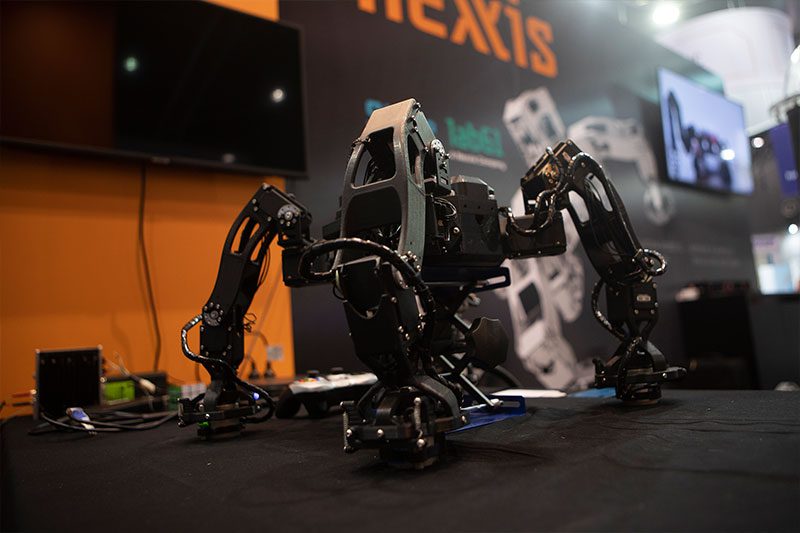The Role Of The Autonomous Robot

Autonomous robots, and their place in industry, is still an area of mystery. While those involved in research and production confidently create never-ending reports about the advantages they’ll bring, the technology is one still shrouded in confusion, mis-information and apprehension.
The big question is, what exactly is the role of an autonomous robot? Do humans get any say into what it does, or do you simply hit a button and off it goes?
While these questions might be somewhat simplistic, they’re a good example of how little many of us understand about autonomous robotic technology.
The following presents an overview of what is meant by the term, autonomous robot. It also discusses some of the many challenges still to be overcome before we can truly embrace what will eventually be commonplace technology.
The Definition of Autonomy in Robotic Technology
The word itself means, the right or condition of self-governance.
When we apply this to robots it encompasses four distinct areas:
- Self-maintenance
- Sensory perception
- Task performance
- Autonomous navigation
Self-Maintenance
Looking after itself is the basis upon which autonomy is built. A robotic model must use what’s known as proprioception to be able to sense its status and needs.
For example, a robot would need to sense when its power source (battery) needs to be charged and take the appropriate action, such as returning to a charging dock. Even more vitally, and especially relevant to be able to work in hazardous locations and/or amongst people, is the ability to monitor heat. This common proprioceptive sensor needs further advancement before we can expect to see fully automated models within the workplace.
Sensory Perception
Following on from the above, an autonomous robot will need to have what’s known as exteroception – in other words, it needs to sense things in the surrounding environment. Movement and its proximity to other objects, the ability to sense encroaching danger (a sharp drop, water, a wall etc) are just two elements of how a robot will need to comprehend its surroundings and take the appropriate action.
Other areas that a robot needs to be able to sense mirror that of the human senses:
- Sight: Such as determining positions of valves, weather conditions, fire, gauge levels
- Sound: Examples include alarms, ultra-sonic and other sounds
- Touch/Feeling: g. responding to temperature or vibrations
- Smell: The ability to sense gaseous or liquid leaks
Task Performance
The robot will need to be able to perform physical tasks. Step one is the ability to carry out a single action: the next stage is that of conditional tasks. Combined together, these allow the robot to compute the information it gains from step one and carry out the required action – step two.
For instance, a security robot senses a breach and responds in an appropriate manner, depending on the location and type of intrusion.
Autonomous Navigation
This can be broken down into two separate areas: interior and exterior navigation.
- Interior navigation is the ability to navigate point to point. Much advancement has occurred since the first commercial robots that navigated using sonar sensing, manually-created CAD floor plans and following walls. Today we see robots navigate through the sensing of features. The future will bring those that can navigate from indoors to outside, creating laser-based maps as they go. Quite simply, they’ll move much in the way that a human does, by changing direction if an obstacle blocks its path.
- Exterior navigation is still a work in progress. While airborne robots are unlikely to encounter obstacles as they fly, there are still many challenges to be overcome for ground robots to achieve autonomy. These include:
- Weather
- Three-dimensional terrain
- Surface density disparity
- An unstable, changing environment
The Different Levels of Autonomy
As technology stands today, full autonomy is not yet possible. However, there are many levels of autonomy that are currently pushing the boundaries of robotic use.
Tele-operated and semi-autonomous are currently in use and, as challenges are overcome, so full autonomy will eventually come to pass. The locations in which today’s robots are successfully deployed are dependent on many criteria, and their integration isn’t yet mainstream. A further aspect of a truly autonomous robot will be its ability to communicate data back to a source. 5G is yet to be significantly rolled out, yet it will be the method of choice once it is. Currently, operations have to rely on 4G networks or even wholly inefficient Wi-Fi systems in remote areas.
True autonomous robots are still some way into the future, but that’s not to say that organisations should fail to take advantage of the semi-autonomous options available now.
No equipment provider is better-placed to bring these advancements to organisations than Perth-based Nexxis. Utilising a welcome equipment procurement programme that offers flexibility and is as dynamic as individual needs, their expert team can advise on the latest tech that will reduce costs and increase efficiency.
Discover more about our full range of robotic inspection equipment or contact us today for a no-obligation chat.
